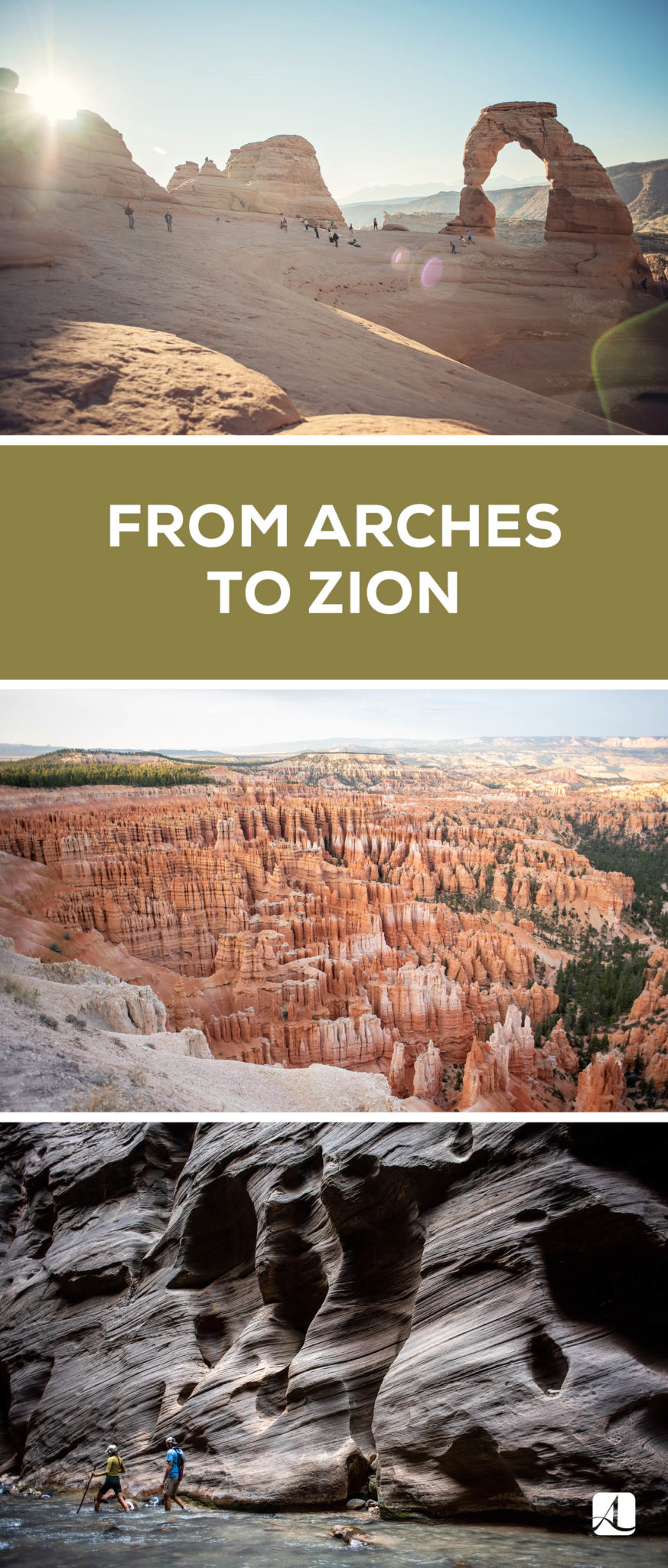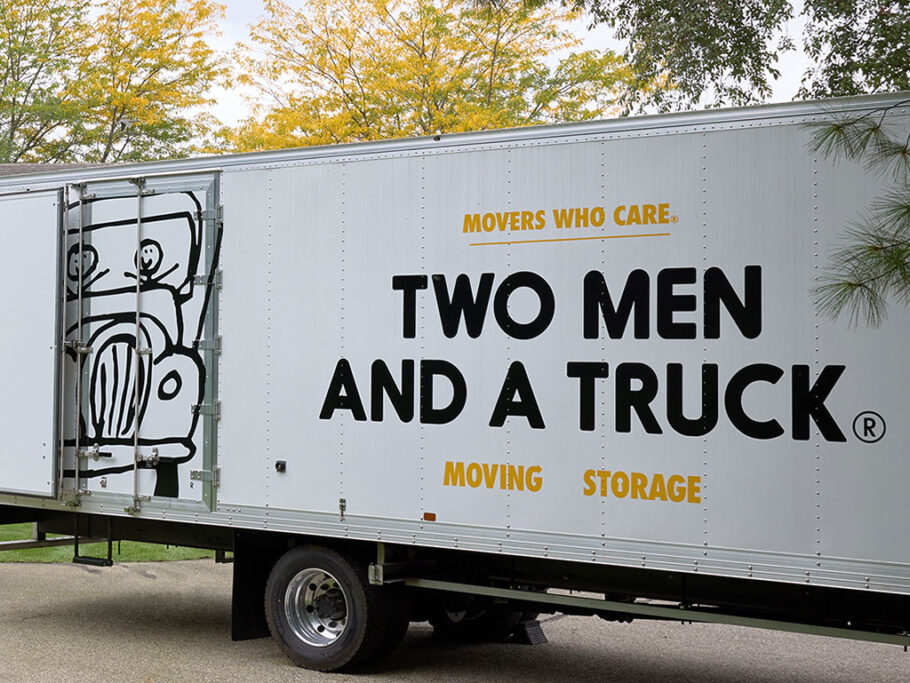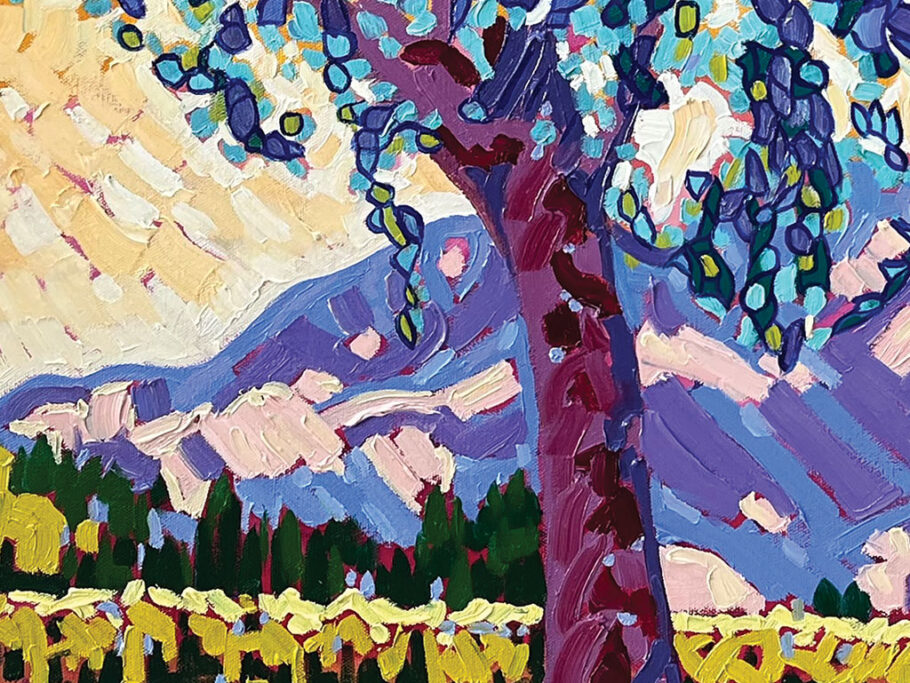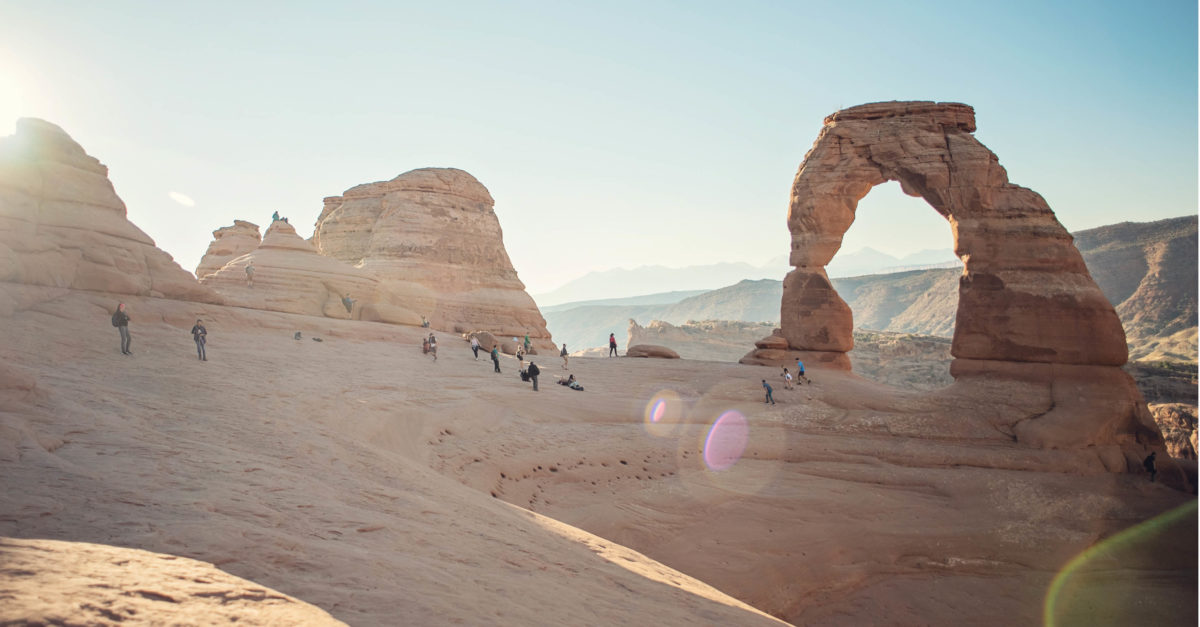From Arches to Zion: Utah’s National Park
Photography by Juliann Itter
If Utah hasn’t been high on your must-visit list, you may want to reconsider. From breathtaking vistas and snow-capped mountains to towering hoodoos (tall, skinny spires of rock) and deep red canyons, Utah’s wilderness really does have it all. Even if you don’t have the time to turn your minivan into an RV to hit the open road, at least consider checking out The Mighty Five. This aptly named group of national parks consists of Arches, Canyonlands, Capitol Reef, Bryce Canyon, and Zion and winds its way through southern Utah, creating a delightful road-trip experience. For two of my friends and me, our new work-from-home model allowed us to take the two-week trip and enjoy the natural beauty of some of our nation’s greatest parks.
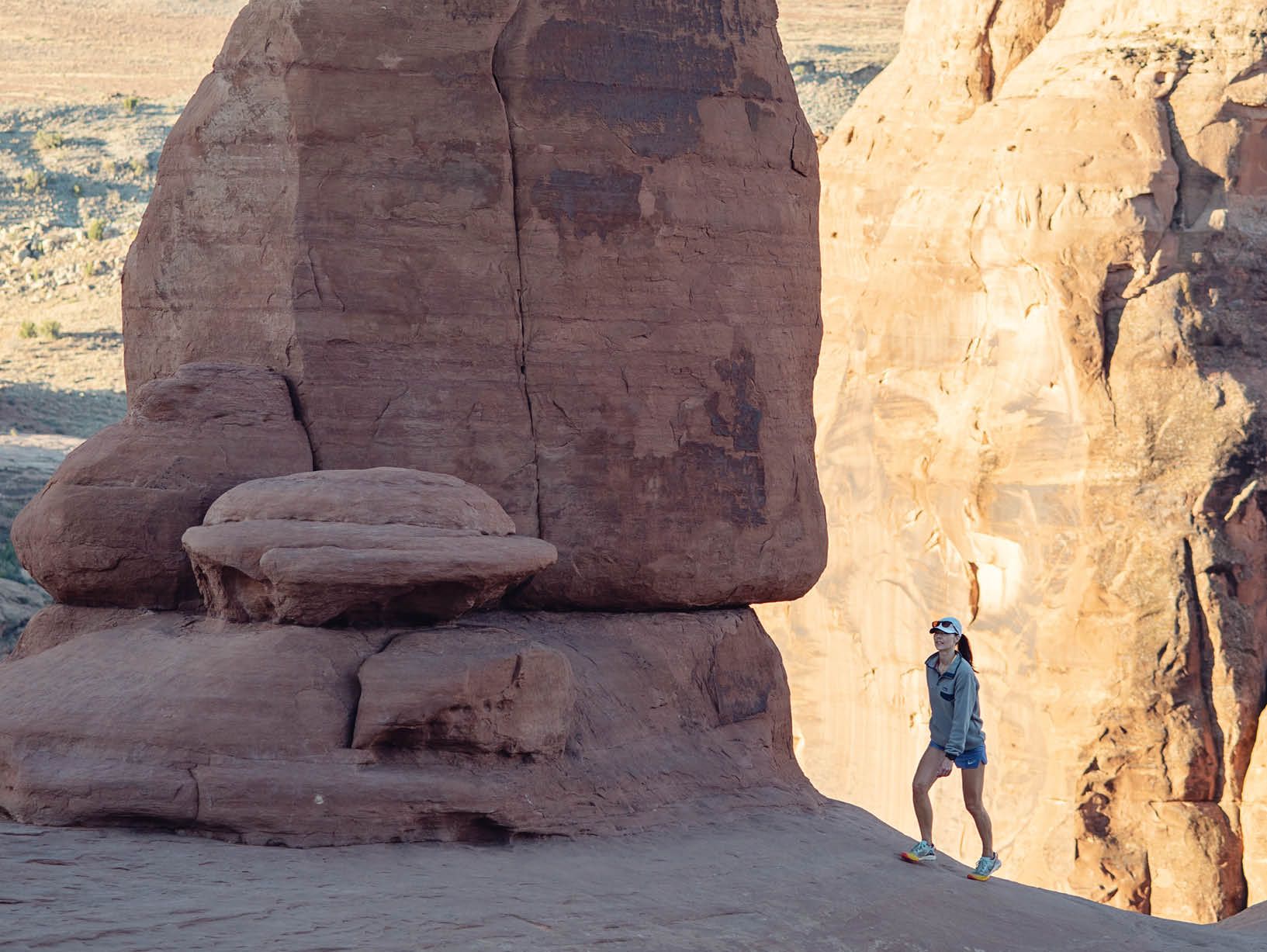
Rafting on the Colorado River
Our adventure started in Moab, as many good adventures do. After taking a wrong turn, my friends and I were fortunate enough to end up on the Upper Colorado River Scenic Byway (U-128). This spectacular route parallels the Colorado River and provides beautiful views of the Fisher Towers and La Sal Mountains. Pro tip: get your friend to drive; you won’t want to miss a second of this stunning landscape.
Arches National Park and the surrounding areas hold enough adventure to keep one occupied for days, weeks, and possibly months at a time. While dirt biking, four-wheeling, and rock climbing are all valid options, there is something to be said for seeing the park by water. There are many different tour groups that offer a variety of ways to get onto the Colorado River, including kayaks, jet boats, and rafts. Several tour groups offer half- or full-day options, and some even provide multiday excursions.
After weighing our options, including price, availability, and time, we decided to take a rafting trip with Navtec Expeditions. This half-day journey included a guide who was strong enough to paddle the raft the entire seven miles down the Colorado River while we soaked in the scenery around us. We were shown historical and natural sites along the river, including areas that BASE jumpers like to frequent. When we wanted to cool off, the mild-to-moderate rapids obliged with cool splashes of water, and we were even able to swim at some points. The tour finished at a beach off U-128, where we enjoyed time in the cool water and hot sun while jet boaters and kayakers passed by us in the canyon. The entire rafting experience provided a unique view of Arches and the surrounding areas and is definitely recommended.
Between hikes in Arches and our river-rafting trip, we spent a half day in Canyonlands National Park. The park is approximately thirty minutes from Arches and provides more breathtaking scenery and epic hikes. We spent an evening taking photos and relaxing near the incredible Mesa Arch. The arch sits on the edge of a 500-foot cliff that drops another 1,200 feet to Buck Canyon. The mountain backdrops and the elegant arch provided the perfect stargazing opportunity.
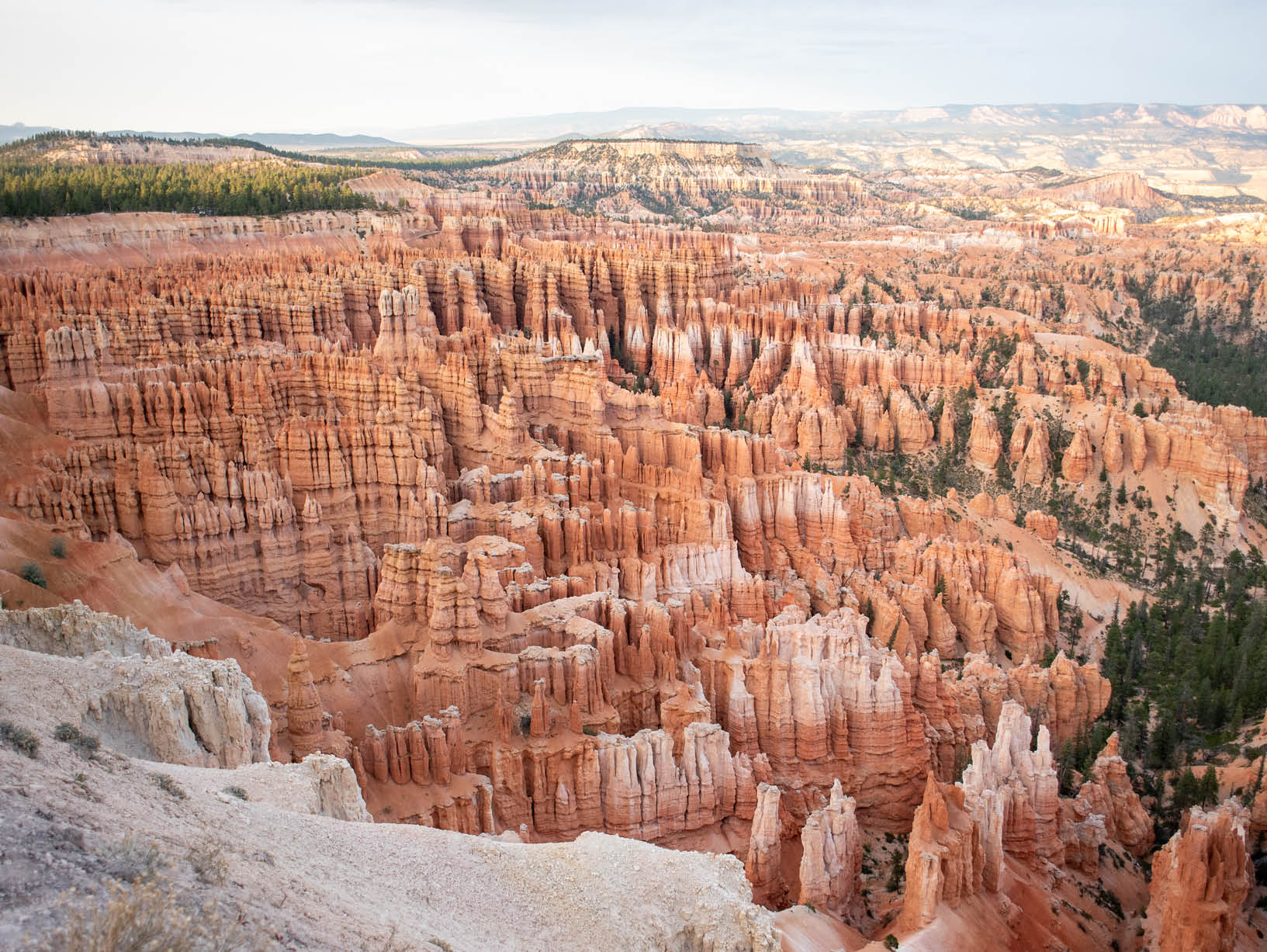
Taking the Scenic Route
The route from Arches to Bryce Canyon National Park is one taken by countless individuals every year. Despite its popularity, it remains a relatively unpopulated stretch of highway with limited amenities along the route. We discovered this the hard way as we took Scenic Byway 24 by way of Capitol Reef National Park. Capitol Reef sits comfortably between Canyonlands and Bryce Canyon and is well worth a stop. The park’s landscape is magnificent and also offers the opportunity to explore local history. You can find out more about the Native Americans who inhabited the area and admire their ancient petroglyphs. You can also explore the Fruita Historic District and the twenty-two orchards that still bear fruit, remnants of pioneer settlers who planted them in 1880.
All the elements needed for road-trip giddiness were in place: windows down, music spilling onto the open road, and snacks from a small-town café. This excitement came to a jarring halt, though, as our car got a flat tire just outside Hanksville, Utah, near Goblin Valley State Park. Pro tip: do not attempt to drive through a desert without tire-changing equipment.
Unable to obtain tools via flagging down passing cars, we resorted to calling trusty AAA. It appeared we were genuinely in the middle of nowhere, but disappointment melted away as the beauty of the desert and the open road enchanted us with a fiery sunset. After reading poetry by headlamp and drawing sketches in the dark, our AAA hero arrived at 10:00 p.m. to change our tire. With our wheels back in action, we drove through the night, stopping briefly at Capitol Reef around midnight, and arrived at our destination, Ruby’s Inn Campground, at about 2:00 a.m.

Hiking the Hoodoos
Bryce Canyon stands in stark contrast to Utah’s other national parks. Instead of towering mountains, the park is a series of natural amphitheaters carved into the edge of the high plateau. The elevation at Bryce is higher than in the other parks, so be prepared to pack some heavier clothes, especially if you plan on camping!
This park also offers avid hikers and not-so-avid hikers alike the opportunity to enjoy its beauty. You can take in the park along the ridge of the plateau or spend time hiking through the rock spires and hoodoos after a steep jaunt into the Bryce Amphitheater. The hike out can be quite strenuous, so ensure that you have plenty of water and time for needed breaks. It’s easy to get caught up in the colorful rock formations and natural wonders around you. Bryce Canyon struck us as otherworldly and one of the most unique places any of us had ever seen.
Sunset on the Mesa
Driving through Zion National Park is a sacred experience and one I’d recommend to anyone. It inspires the same awe one has when walking into a cathedral: the space is quiet, you feel small, and the world feels so big. Hiking through Zion is just as spectacular, with canyon vistas, waterfalls, dramatic views of the Virgin River, and sandstone cliffs revered by climbers. We spent a great deal of time hiking and biking in Zion. Pro tip: it is 100 percent worth it to wake up before the sun and start hiking early before the heat sets in. Your achy body will thank you later in the day.
For accommodations, we chose the Zion Wright Family Ranch on the Smith Mesa, approximately thirty minutes from the park. It is advertised as an off-the-grid experience, which translates to no running water, unmarked sites, and limited bathroom facilities; it is rustic, but the views can’t be beat. The owners of the campground raised thirteen children and have been living on the land for the last six generations. Their sons and grandsons are the famous World Champion Saddle Bronc Riding Wrights. The family offers sunset horseback rides you can book up to a day in advance. The patriarch of the family, Bill Wright, was our trail guide, and he pointed out many areas of interest, like Kolob Canyons, as well as provided some history of the mesa. The ride wound its way around the mesa, overlooking parts of Zion National Park. Bill made sure to stop for photo opportunities and showed us his favorite view from his land. One of his grandsons was the ranch hand and entertained the riders with humorous stories about school and his daredevil riding abilities. The horseback ride provided a wonderful end to a long day of exploration in the Zion area. Later that night, the darkness of the secluded ranch offered a star-filled sky
to remember.
The Mighty Five
Journeying through Utah’s national parks was the highlight of a year made difficult by COVID-19. The parks cultivated within me a sense of renewal. Nature, unaffected by the virus, has stayed the same. In fact, it has thrived due to less pollution and fewer crowds, offering a stark contrast to our ever-changing society. This was a welcome reminder to me as I viewed the towering Colorado River cliffs and star-filled sky above Mesa Arch in awed silence. To echo my words from earlier, if Utah has not been on your travel list, reconsider. Your body and soul will thank you.
For more info, go to visitutah.com
